Top 10 Bootstrap Alternatives for Faster, Lighter, and Flexible Design
Bootstrap remains one of the most widely used frontend frameworks. However, with over 22% of websites utilizing Bootstrap, many developers opt for alternatives that better suit their specific needs.
These lightweight Bootstrap alternatives often provide leaner packages, greater customizability, or compatibility with modern JavaScript frameworks like Vue or React.
Choosing the right frontend frameworks without Bootstrap can make a significant difference in how efficiently and effectively a web project is developed and maintained.
In this article, we will check out the top 10 Bootstrap alternatives for frontend developers, offering powerful features and modern design capabilities for web development needs in 2025.
Regardless of project size, from building a minimum viable product (MVP) for startups or scaling enterprise apps, these frameworks offer the flexibility and performance modern developers demand.
1. Tachyons
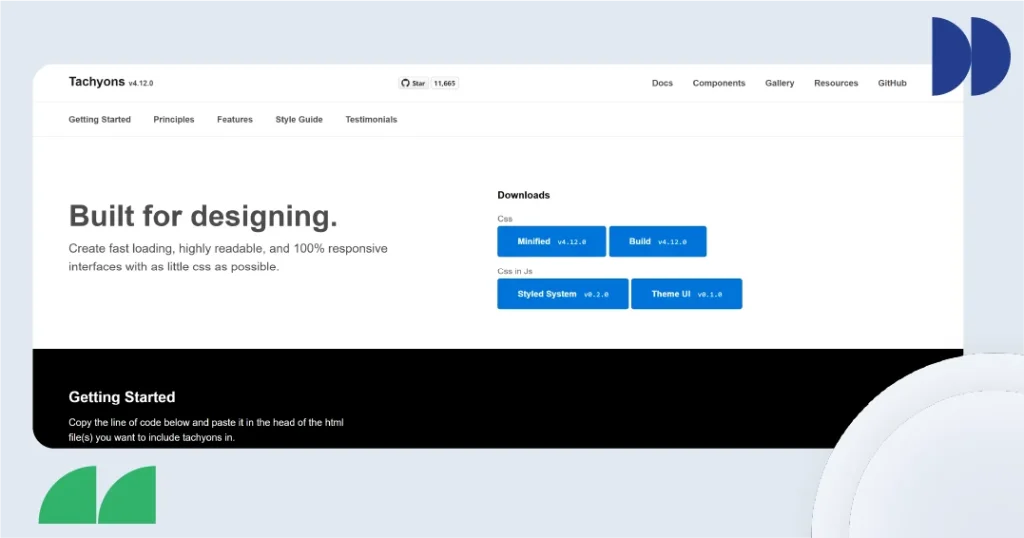
Best for: Minimalistic designs and reduced file sizes
Tachyons is one of the fast-loading CSS frameworks that emphasizes small, reusable classes to build fast-loading websites with clean, semantic code. Tachyons is distinguished by its minimalist design approach and dedication to compact file sizes, making it ideal for projects demanding impeccable performance and a sleek visual appeal.
Table of Contents
Why Choose This Alternative?
Tachyons is one of the open-source CSS frameworks that appeals to developers seeking performance-oriented designs with minimal overhead. Its class-based system allows for atomic design, making it easier to maintain consistency while avoiding stylesheet bloat.
Key Features
- Offers a wealth of CSS classes for fine-tuned design without bloating style sheets.
- Compatible with JavaScript frameworks, facilitating the creation of interactive components.
- Although it doesn’t have official integration support, its straightforwardness enables compatibility with any frontend JavaScript framework.
Pricing
Free and open source
| Pros | Cons |
|---|---|
| Modular and scalable CSS approach | It may be challenging for beginners unfamiliar with utility CSS |
| Enables precise design with smaller file sizes | Not ideal for large-scale UIs without architectural planning |
| Compatible with any frontend framework | No official plugin/integration support |
2. Bulkit
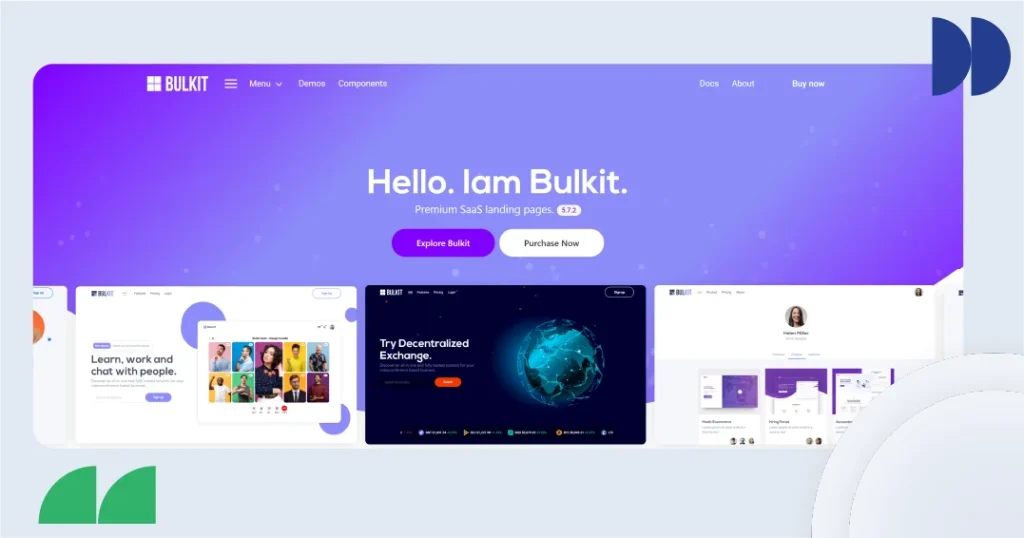
Best for: Startups needing pre-built components
Bulkit is designed with startups in mind, offering pre-styled components and templates that allow rapid prototyping and launch. Bulkit’s rich collection of pre-made components can significantly speed up the development process, catering specifically to startups that need to rapidly prototype and launch web interfaces.
Why Choose This Alternative?
Its ready-to-use UI elements make it especially valuable for early-stage startups aiming to deliver quickly without investing in a custom design system.
Key Features
- Over 170 pre-designed components and more than 40 CSS animations.
- A variety of layout options, all designed with modern aesthetics in mind.
- Although it doesn’t have particular integrations, its diverse components make it adaptable to different tech stacks.
Pricing
Starts at $39 (single-use license)
| Pros | Cons |
|---|---|
| Pre-built components save development time | Not ideal for enterprise-scale systems |
| Useful for startup needs | Lacks native integrations with modern JS frameworks |
| Multiple layout and animation options | Pricing may not scale well for larger dev teams |
3. Pure.css
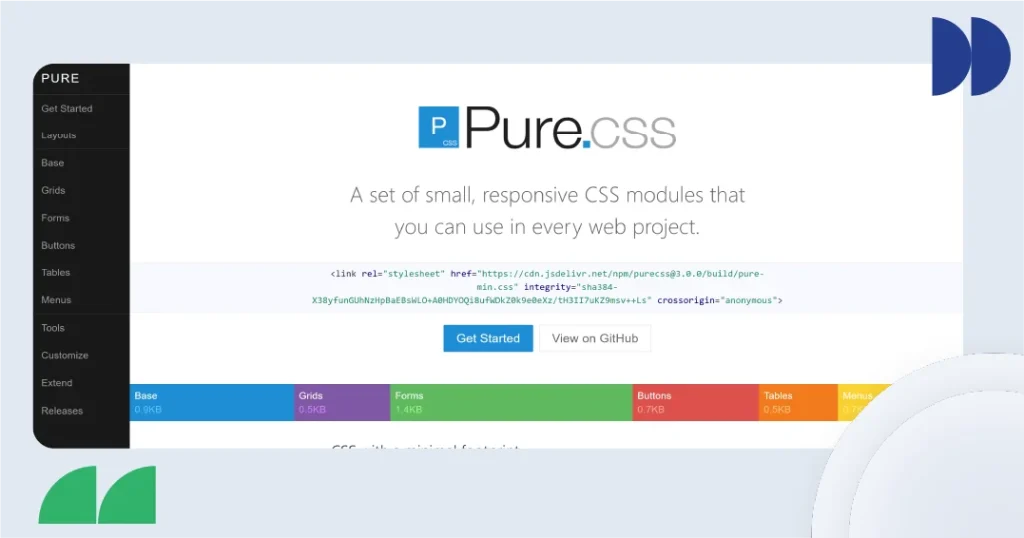
Best for: High-performance, minimalist web design
Pure.css is one of the top CSS frameworks like Bootstrap offers a lean set of CSS modules, perfect for projects where efficiency and fast load times are top priorities. Its simplicity and emphasis on performance make it ideal for projects where high performance and quick load time are important.
Why Choose This Alternative?
With a focus on essential styling and performance, Pure.css fits projects that need lightweight frameworks without sacrificing core design needs.
Key Features
- Set of small, responsive CSS modules including grids, menus, buttons, and tables.
- Works well with other libraries like Normalize.css and can be used alongside any JavaScript library or framework.
Pricing
Free and open source
| Pros | Cons |
|---|---|
| Excellent load speed and efficiency | Too limited for complex web apps |
| Plays well with other libraries | Requires deeper CSS understanding for custom styles |
| Fully responsive and mobile-ready | Minimal pre-built UI components |
4. Vuetify
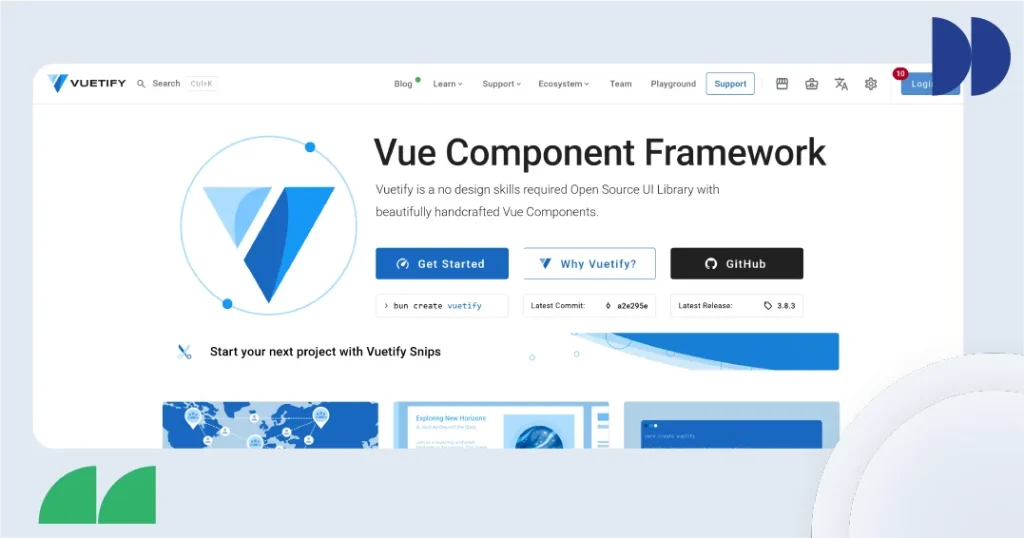
Best for: Vue.js based single-page applications
Vuetify is a Vue UI framework built on Material Design principles, offering a vast range of polished, functional components. Designed specifically to work with Vue.js, Vuetify adheres to Google’s Material Design specifications, making it ideal for creating rich single-page applications using Vue.js.
Why Choose This Alternative?
Developers building Vue.js SPAs benefit from Vuetify’s suitable component suite and consistent design system, reducing the need for custom UI creation.
Key Features
- Over 80 components, including dialogs, navigation drawers, and cards.
- Offers a range of themes and layout options.
- Simply integrates with other Vue.js tools and libraries.
Pricing
Free (Open Source); Premium starts at $5/user/month
| Pros | Cons |
|---|---|
| Deep Vue.js integration | Not usable outside Vue.js projects |
| A complete material design support | Not usable outside Vue.js projects |
| Highly customizable theming options | Learning curve for non-Material or non-Vue users |
5. SPECTRE.CSS
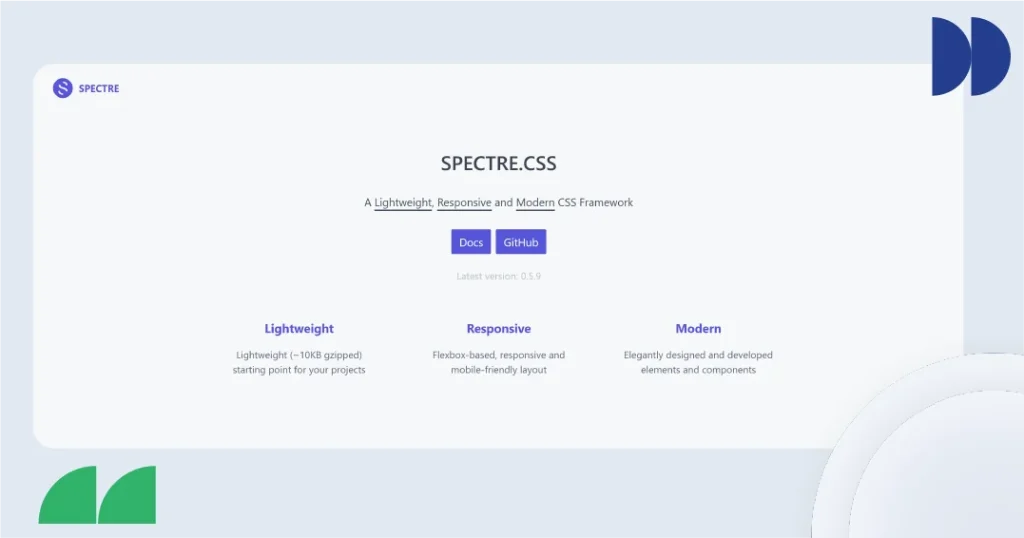
Best for: Lightweight, flexible design systems
SPECTRE.CSS is one of the fast-loading CSS frameworks, providing a flexbox-based system with modern, responsive utilities in a compact package. It is one of the minimal CSS frameworks, combined with responsive design features, that makes SPECTRE.CSS suitable for developers prioritizing design cleanliness and performance.
Why Choose This Alternative?
Its commitment to crafting contemporary, adaptable designs without unnecessary bulk makes it perfect for individuals seeking sleek and versatile designs in lightweight formats.
Key Features
- Tools for design, text, and UI elements include buttons, forms, and cards.
- Built with flexbox for responsive layouts and components.
- Designed with modularity in mind, it is compatible with many custom web app development tools and workflows.
Pricing
Free and open source
| Pros | Cons |
|---|---|
| Lightweight and fast due to a minimalistic design | Not as detailed as larger CSS frameworks |
| Modern, flexbox-based responsive layout system | Reduced community backing and limited resources versus widely-used frameworks. |
| A variety of pure CSS components | Lacks JavaScript components, relying solely on CSS |
Getting Tired of Slow Sites and Limiting Templates?
Don’t let outdated frameworks drag your performance down. Switch to faster, more flexible frontend solutions customized to your brand.
6. UIkit
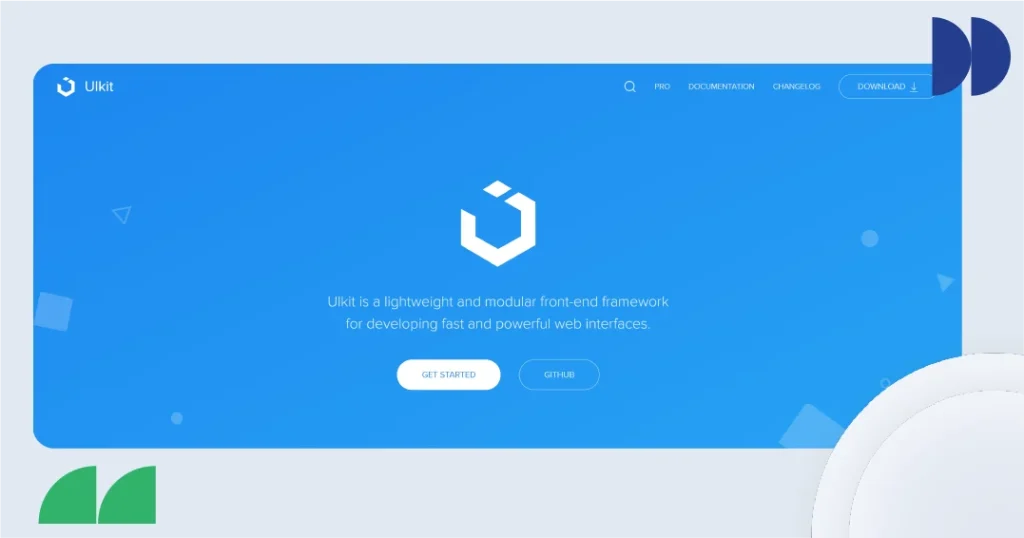
Best for: Modular, component-rich development
UIkit offers a full set of HTML, CSS, and JS components, allowing quick assembly of consistent interfaces. With its focus on a broad and user-friendly component library, it stands out as an excellent option for developers seeking a comprehensive and intuitive component collection.
Why Choose This Alternative?
UIkit is perfect for developers who want a modular approach to design and layout without writing everything from scratch.
Key Features
- Extensive collection of HTML, CSS, and JS components.
- Highlights encompass a flexible grid layout, navigation tools, and form components.
- The modular nature allows easy incorporation into various web development workflows and tools.
Pricing
Free and open source
| Pros | Cons |
|---|---|
| Large collection of components | Smaller user community compared to Bootstrap/Tailwind |
| Modular and customizable | Advanced customization can require deeper learning |
| Suitable for a wide range of use cases | Less mainstream, meaning fewer third-party templates |
7. Foundation
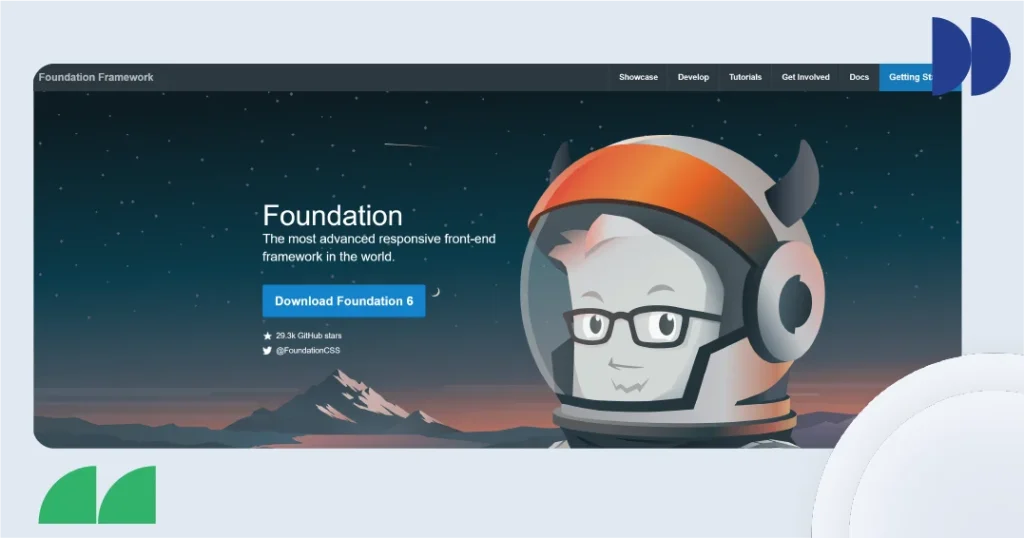
Best For: Developers prioritizing responsive, mobile-first design
Foundation is one of the powerful frontend frameworks without Bootstrap, engineered around a mobile-first philosophy. It delivers various tools for responsive web development, enabling consistent performance and appearance across smartphones, tablets, and desktops. Its architecture supports scaling from small to large screens, making it an excellent fit for adaptive web projects.
Why Choose This Alternative?
Foundation was included for its strong focus on mobile-first development, a critical consideration in today’s mobile-dominant world. It offers built-in responsiveness, ensuring that applications function optimally across varying device types without requiring separate codebases or extensive overrides.
Key Features
- Completely mobile-first grid system and responsive utilities
- Built-in support for device-specific media queries and navigation components
- Strong integration with tools like Sass and AngularJS for flawless workflows
Pricing
Foundation is fully open-source and free to use.
| Pros | Cons |
|---|---|
| Excellent mobile-first and responsive capabilities | It can be challenging for newcomers due to its advanced feature set |
| Works well with Sass and AngularJS | It may be too feature-rich for smaller or less complex web projects |
| Includes a wide range of responsive UI components | Smaller community compared to more mainstream frameworks like Bootstrap |
8. Bulma
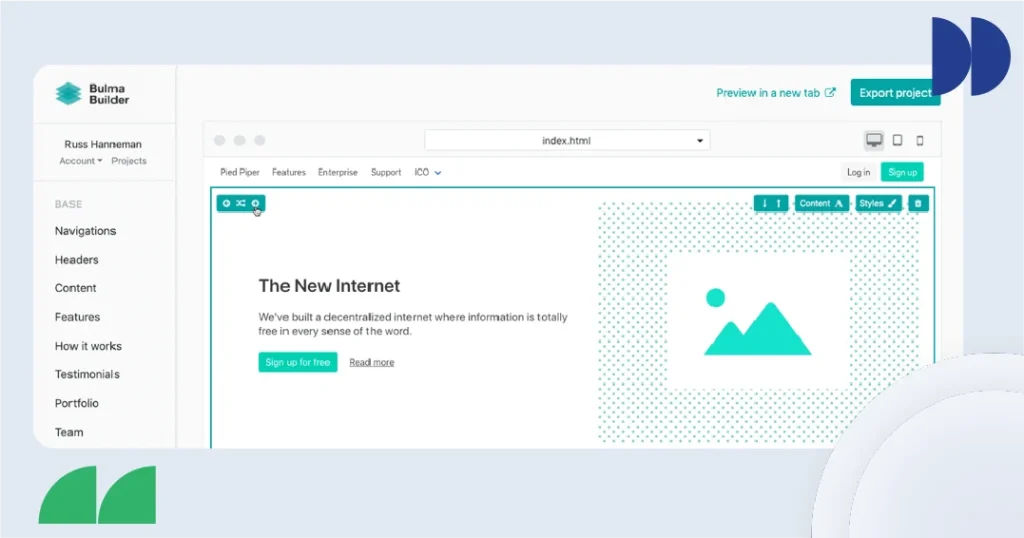
Best for: Flexbox-based responsive layouts
Bulma is one of the best UI frameworks better than Bootstrap, provides an easy-to-use Flexbox layout system, with utilities and components for clean responsive designs. Its efficient use of Flexbox allows for responsive design with minimal effort, making it a standout choice for developers seeking a powerful, Flexbox-based CSS framework.
Why Choose This Alternative?
Bulma simplifies layout creation using Flexbox, making it ideal for responsive design novices and professionals alike.
Key Features
- A variety of UI elements that are pre-built and simple to personalize.
- A flexible framework enabling developers to incorporate only the necessary features.
- Easily fits into various development environments, working with JavaScript frameworks like Vue.js or React.
Pricing
Free and open source
9. Semantic UI
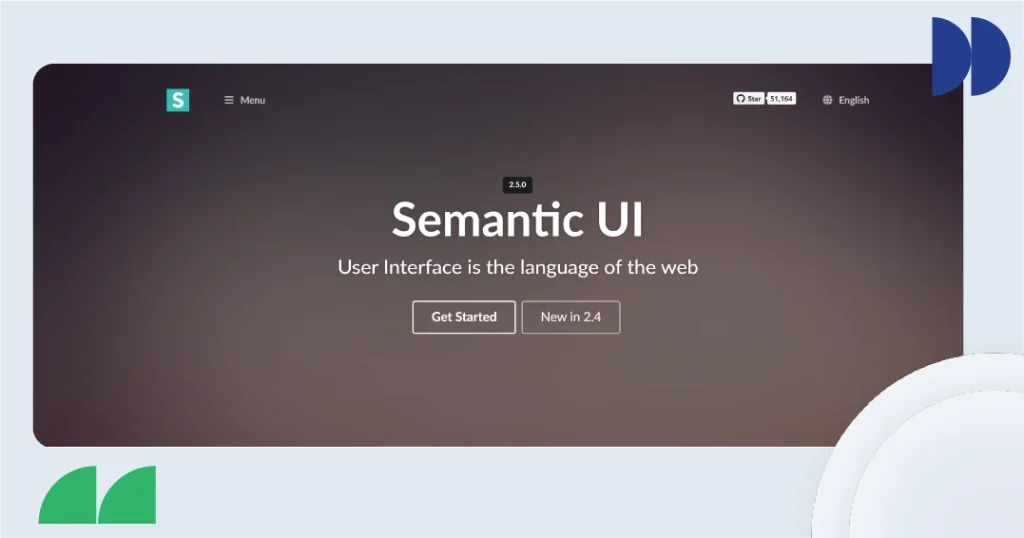
Best for: User-friendly HTML and accessible designs
Semantic UI allows developers to write HTML that is readable and semantically structured, improving development clarity. It also provides a wide range of prebuilt components styled with human-friendly class names, simplifying UI development.
Why Choose This Alternative?
This framework prioritizes clarity and accessibility, ideal for teams that value clean, understandable HTML for faster onboarding and collaboration.
Key Features
- Semantic UI uses intuitive, human-readable class names that simplify code readability and maintenance.
- It offers built-in support for jQuery and includes a dedicated React library for flawless integration with modern JavaScript frameworks.
- The framework provides extensive UI kits and over 3,000 icons to speed up development and ensure design consistency.
Pricing
Free and open source
| Pros | Cons |
|---|---|
| Easy to learn and write | Slightly outdated compared to newer frameworks |
| Supports third-party libraries | Slower development pace and community contributions |
| Focus on accessibility and structure | May not integrate easily with modern JS frameworks |
10. Tailwind CSS

Best for: Custom designs via utility-first classes
Tailwind CSS is one of the modern CSS frameworks, giving developers deep control over every UI element through atomic classes. It promotes rapid development by enabling the creation of custom designs directly within the HTML structure.
Why Choose This Alternative?
Tailwind suits those looking for total design freedom without being tied to component presets. Its utility-first nature allows for fast prototyping and complex design systems alike.
Key Features
- Tailwind CSS is fully customizable, allowing developers to define their themes, colors, and breakpoints.
- It includes responsive utilities and supports pseudo-states like hover, focus, and active for interactive design.
- The framework works with modern JavaScript libraries such as React, Vue, and Angular.
Pricing
Free (open source); Tailwind UI starts at $249/year/developer
| Pros | Cons |
|---|---|
| Customization and flexibility | Verbose HTML if not structured with components |
| Integrates with all major frameworks | Steeper learning curve for beginners |
| Active community and regular updates | Premium Tailwind UI is an additional cost |
Bootstrap vs Modern Alternatives: Choosing the Right Frontend Framework
Since frontend development remains a key factor in business growth by shaping user experience, improving engagement, and driving conversion. When choosing a frontend framework, it’s essential to consider the balance between features, customization, performance, and ease of use.
Bootstrap has long been a go-to solution for developers due to its rich component library, responsive grid system, and extensive documentation; it can sometimes be heavier and more rigid than newer alternatives.
However, the table below compares Bootstrap with ten popular frontend frameworks, highlighting their best use cases, design approach, customization options, and more to help you choose the right tool for your project.
| Framework | Best For | Design Style | Customization | JS Dependency | Type |
|---|---|---|---|---|---|
| Bootstrap | General-purpose UIs | Component-based | Medium (Sass, themes) | Yes (with jQuery) | CSS + JS Framework |
| Tachyons | Lightweight, fast-loading sites | Utility-first | High (utility classes) | No | Utility CSS Toolkit |
| Bulkit | Modular, scalable layouts | Modular, component- based | Medium (Sass-based) | Low | CSS UI Toolkit |
| Pure.css | Simple, minimal websites | Minimal, clean base styles | Low (custom CSS needed) | No | Minimal CSS Framework |
| Vuetify | Vue.js apps using Material Design | Material Design (Vue only) | High (themes & components) | Yes (Vue.js required) | Vue-based UI Framework |
| Spectre.css | Quick, simple, modern UIs | Lightweight & modern | Low | No | Lightweight CSS Framework |
| UIkit | Custom complex UIs | Modular & flexible | High (Sass & components) | Vanilla JS only | Modular CSS + JS Framework |
| UI Kit | Scalable UI design for apps | Responsive & customizable | High (component overrides) | Low | UI Toolkit (CSS + JS) |
| Bulma | Clean, flexbox-based websites | Modern flexbox layout | Medium (Sass variables) | Minimal | Flexbox CSS Framework |
| Semantic UI | Readable, semantic HTML-based UIs | Semantic, human-readable | Vanilla JS only | Yes | CSS + JS UI Framework |
| Tailwind CSS | Fully custom UIs with utility-first CSS | Utility-first & atomic classes | Very high (configurable) | No | Utility-first CSS Framework |
Frequently Asked Questions (FAQs)
Why Should I Choose An Alternative to Bootstrap?
While Bootstrap is popular and beginner-friendly, it can be heavy, overly opinionated, and limiting for custom designs. Choosing an alternative can offer better performance, cleaner code, and more flexibility in layout and styling. Many modern frameworks are lighter, easier to customize, and more aligned with today’s design trends, making them ideal for developers seeking speed, uniqueness, and improved user experience.
Is Tailwind CSS A Good Alternative to Bootstrap?
Yes, Tailwind CSS is a great alternative if you want more design flexibility, cleaner code, and faster performance. It’s highly customizable but has a steeper learning curve than Bootstrap.
How do Bootstrap Alternatives Compare In Terms of Flexibility?
Many Bootstrap alternatives offer greater flexibility by avoiding fixed styles and components. Frameworks like Tailwind CSS and UIkit let developers customize layouts and design systems more freely, making them ideal for unique, non-standard interfaces.
Are there any free frameworks that work like Bootstrap?
Yes, several free frameworks offer similar functionality to Bootstrap, including Bulma, UIkit, Tailwind CSS, and Pure.css. They provide responsive grids, UI components, and modern design tools, often with more flexibility and less bloat.
Conclusion
Bootstrap remains a dominant force in web development, powering over 7.16 million live websites and commanding a 42.07% market share among UI frameworks. However, the needs of developers and the emergence of new frameworks have led many to find alternatives that offer different features, performance benefits, or design philosophies.
So, relying solely on Bootstrap may not always meet the diverse needs of modern web development. The ten Bootstrap Alternatives discussed offer unique strengths, whether it’s minimalism, rich component libraries, or deep customization. These responsive design frameworks in 2025 allow developers to build lightweight and scalable designs for specific project goals.
Frustrated with Bootstrap’s Limitations and Rigid Design Frameworks?
Don’t let inflexible tools hold you back. Find the agile frontend solutions built for creative freedom and speed.

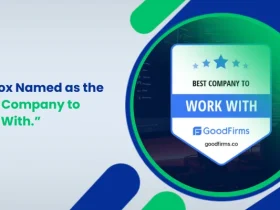


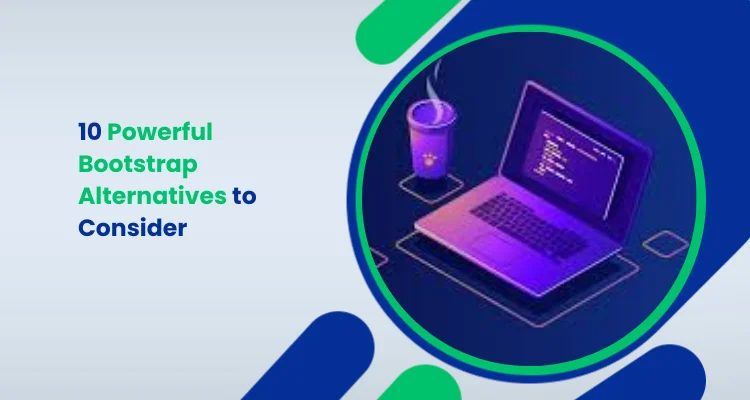



Share your thoughts about this blog!